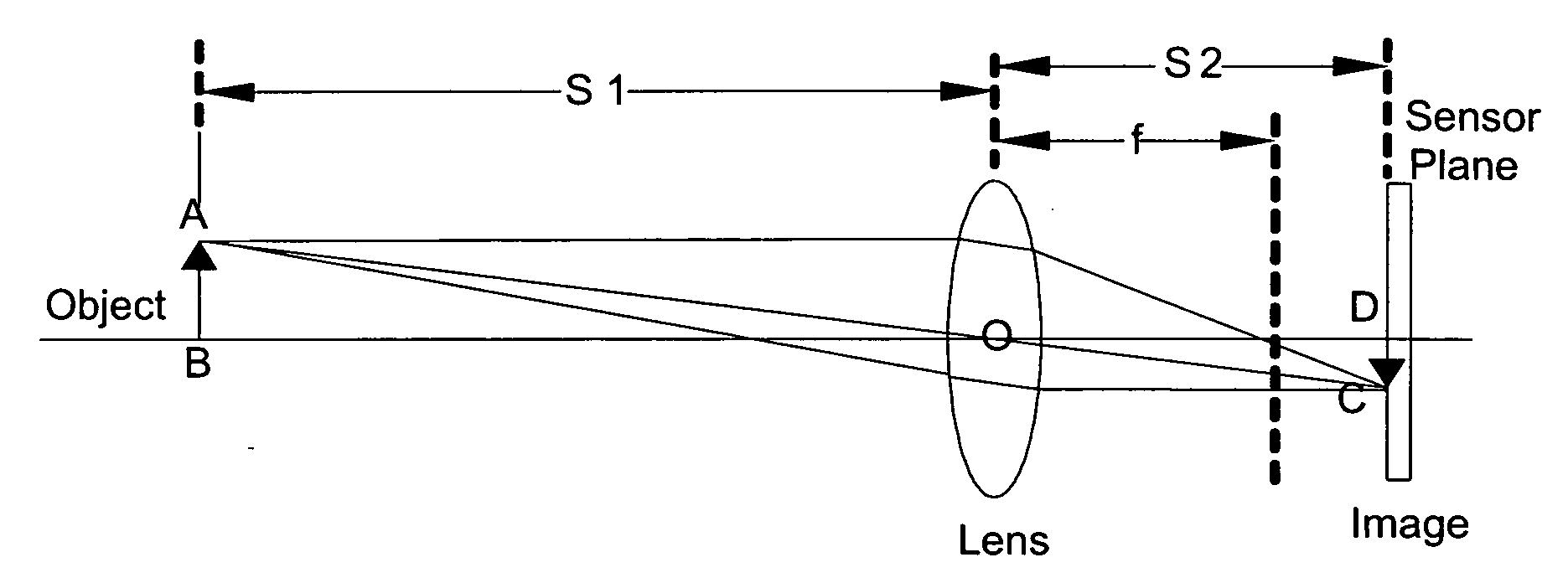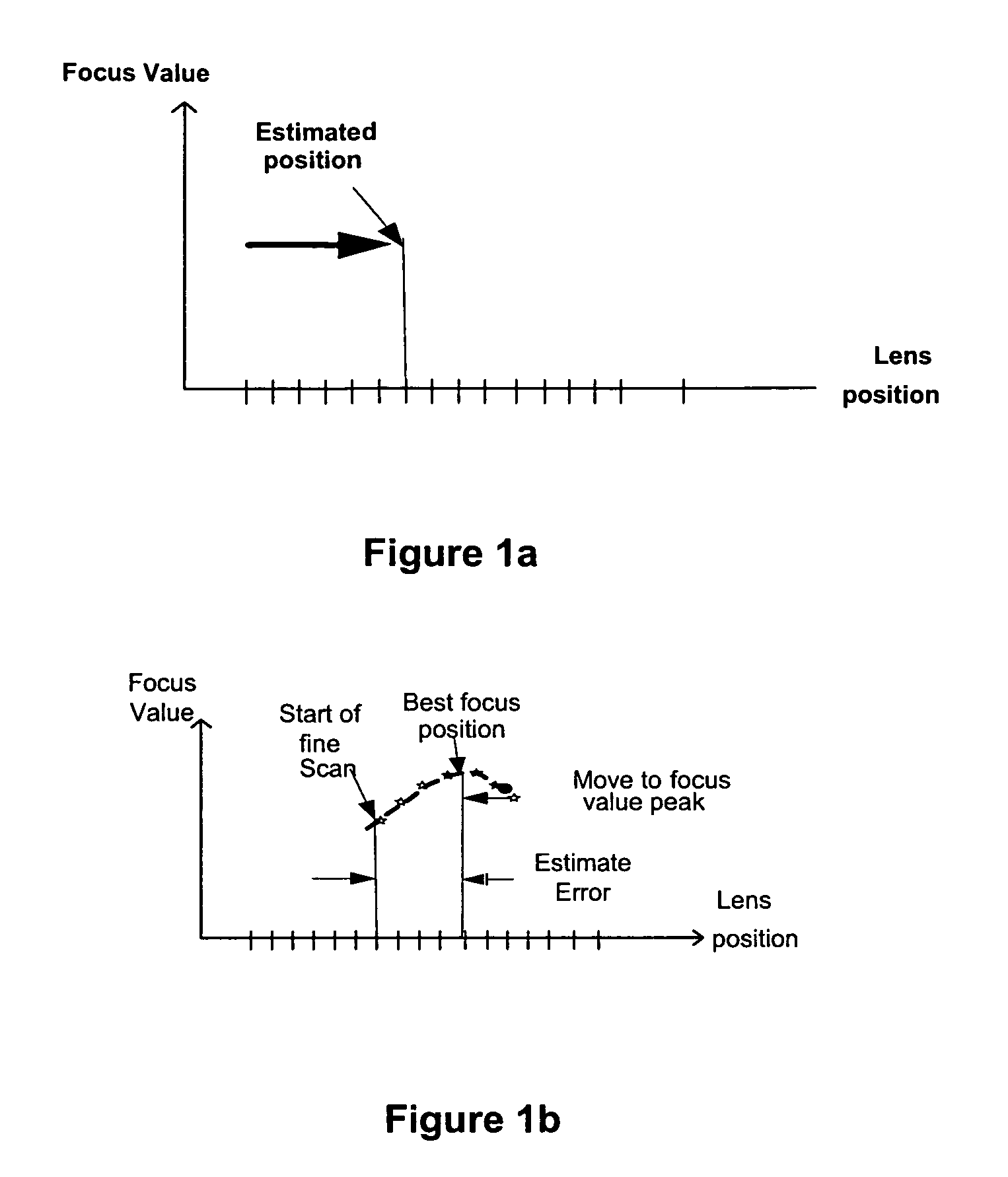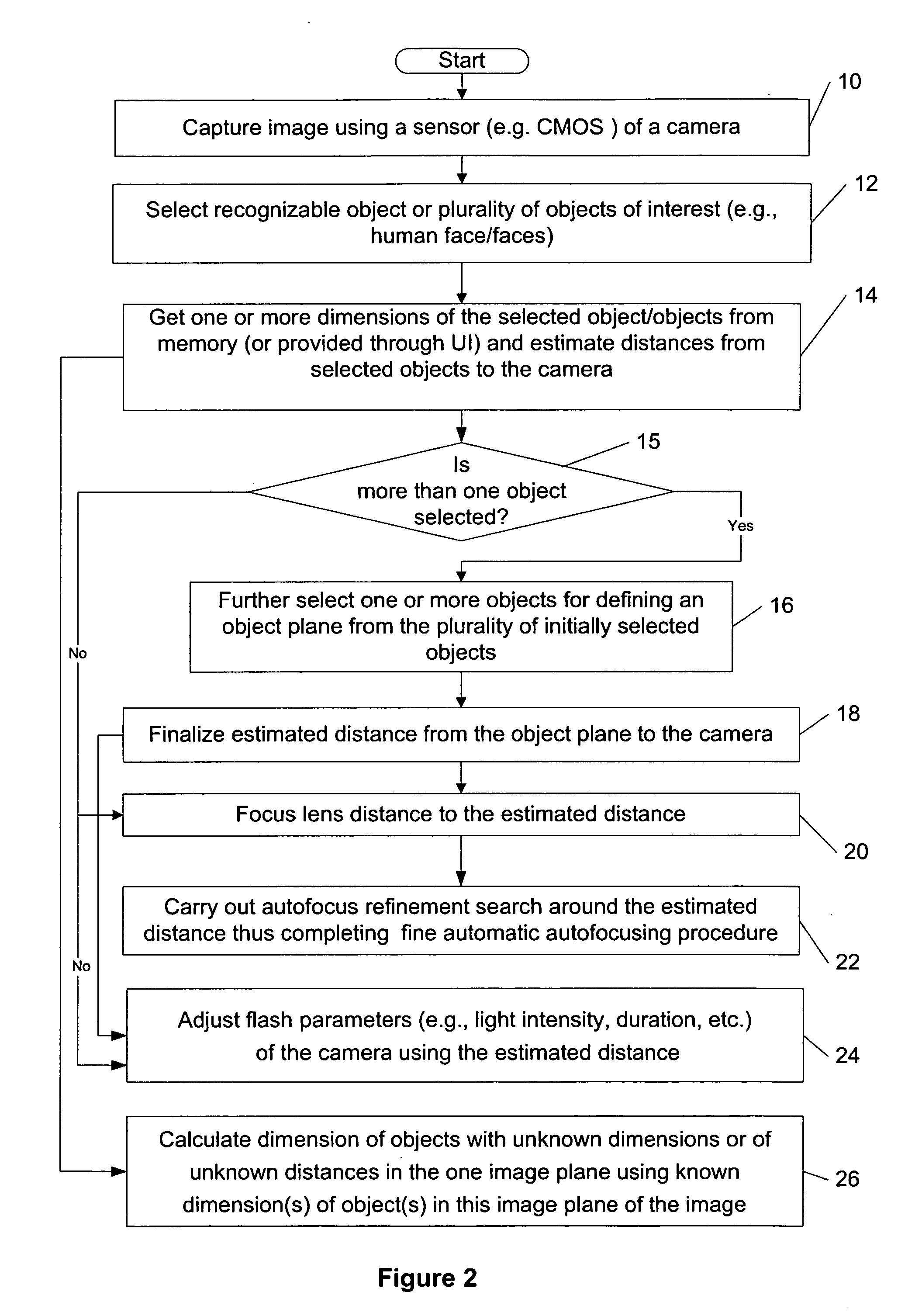Passive distance estimation for imaging algorithms
a technology of passing distance estimation and imaging algorithms, applied in the field of cameras or electronic devices, can solve the problems of difficult tracking, complicated user experience, and time-consuming operation of af operations
- Summary
- Abstract
- Description
- Claims
- Application Information
AI Technical Summary
Benefits of technology
Problems solved by technology
Method used
Image
Examples
Embodiment Construction
[0030]A new method, apparatus and software product are presented for a passive estimation of a distance between a camera or an electronic device comprising the camera (e.g., a wireless camera phone) and an identified object or objects (e.g., automatically recognizable by the camera) having one or more known dimensions and located substantially in one object plane using an image (e.g., provided by the camera) for implementing by the camera / electronic device one or more imaging algorithms (e.g., autofocusing, flash adjustment, etc.) using that distance.
[0031]With the introduction of object (e.g., human face) recognition and tracking algorithms in most camera systems, additional parameters such as feature size (e.g., human face size, distance between eyes, nose to eyes ratio, nose to mouth ratio and other possible face characteristics) become readily available which may be used to improve existing auto-focus, flash control, image quality and user experience, according to various embodi...
PUM
 Login to View More
Login to View More Abstract
Description
Claims
Application Information
 Login to View More
Login to View More - R&D
- Intellectual Property
- Life Sciences
- Materials
- Tech Scout
- Unparalleled Data Quality
- Higher Quality Content
- 60% Fewer Hallucinations
Browse by: Latest US Patents, China's latest patents, Technical Efficacy Thesaurus, Application Domain, Technology Topic, Popular Technical Reports.
© 2025 PatSnap. All rights reserved.Legal|Privacy policy|Modern Slavery Act Transparency Statement|Sitemap|About US| Contact US: help@patsnap.com



